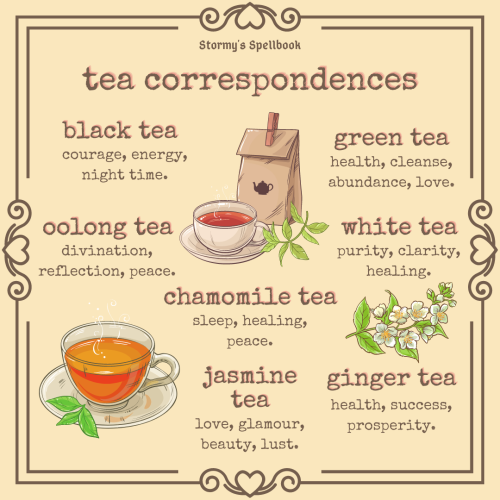#tea correspondences
White, green, oolong, and black tea all come from the same plant (camellia sinensis) but are separated by how oxidized they are.
A lot of ‘tea correspondence’ lists make associations based on the *color* of the tea, rather than by the oxidation cycle. Correspondences are quite personal, of course, but as somewhat who quite likes tea I think there can be deeper meaning beyond the color.
I associate the four types of teas and other four step cycles: ages, time of day, elements, seasons. I’ve also included the health benefits of each type of tea.
Green Tea: Childhood • Morning • Earth • Spring.
All tea starts out green. Green tea is not oxidized.
Nature, health and growth.
Interferes with the growth of cancers; prevents clogging of the arteries, burn fat, counteracts oxidative stress on the brain, reduces risk of neurological disorders, reduces risk of stroke, and improves cholesterol levels.White Tea: Youth • Afternoon • Air • Summer.
White tea is 1-10% oxidized.
Cleanliness, purity and simplicity.
The most potent anticancer properties compared to more processed teas. Good for skin.Oolong Tea: Maturity • Evening • Water • Autumn.
Oolong tea is 10-85% oxidized.
Stability, balance, and variety.
Lowers cholesterol levels.Black Tea: Old Age • Night • Fire • Winter.
Red tea (known as black tea in the west) is 100% oxidized.
Rationality, formality, and energy.
Protects lungs from damage caused by exposure to cigarette smoke, reduces the risk of stroke.

